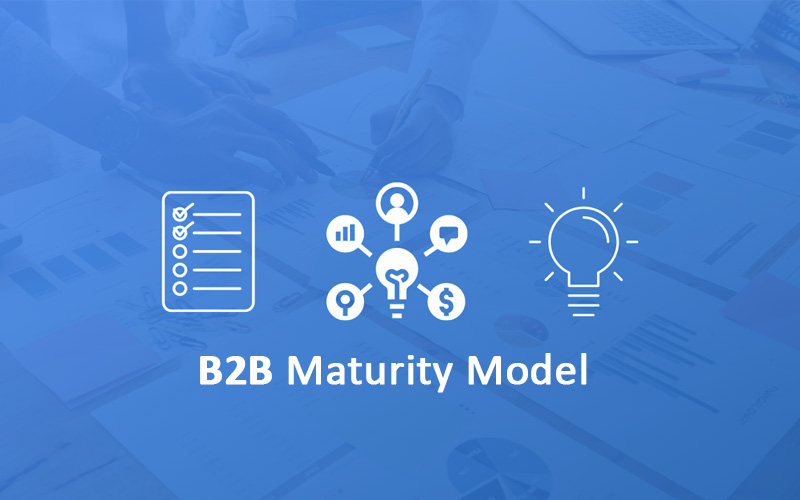Every industry has a dedicated benchmarking index for making self-assessment and creating a plan for future growth. Unfortunately, there was no one-size fit best practice for the eCommerce industry. Things changed with the advent of the B2B maturity model for eCommerce businesses. This model is an epitome of growth, and it works wonders if you have just launched your business.
Understanding Ecommerce Maturity Model
A maturity model lets you see where your business stands and what features you need to deliver an excellent experience to your audience. It also tracks your market position, identifies the functional gaps and potential, and crafts a growth plan. Using this mode, an eCommerce store is able to recognize a way to move forward instead of being stagnant.
There are four stages of complete maturity in an eCommerce business:
Stage 1: The early entrants (when you have little to no understanding about eCommerce)
Stage 2: The aspirants (you are learning the ropes to establish your business)
Stage 3: The Dynamic Unicorns (you are now offering a competitive experience to your audience)
Stage 4: The Rode Models (you have grown into an industry leader)
How to Assess Your Current Performance Level?
With a B2B maturity model, you can access the current performance of your business. However, for that, you must expand your knowledge and skillset alongside your business’s expansion. It may also mean having the right team by your side. To find the hidden gems in marketing, you can always reach out to a staffing agency.
But how to access your performance? Ask yourself these questions:
- What do you wish to achieve your business objectives?
- What are your current capabilities in comparison with market availability?
- How do your capabilities fit the market?
Keeping these questions in consideration, let’s dive into the stages of the B2B maturity model to understand what stage your business falls into:
Stage 1
When you are stage one, this means you are an apprising entrepreneur who wants to create and grow their online presence. You must work on brand awareness, and strategies to drive traffic to your site. You will also be using email marketing and other essential marketing strategies to get the attention of your target audience. To help you with your email marketing efforts, you may want to consider working with one of the top email marketing agencies in Austin.
At this point, your communication is not personalized because you are just introducing your retail business to the target market. You might want to find an SEO expert and a marketing expert to make your business known and connect with the right type of audience.
Stage 2
At this stage, you are using more than marketing channels. You are now thinking of better ways to engage with your audience. This is where you start incorporating insight drive offers. You will be using traditional and digital marketing approaches. You might as well start testing behavioral-based targeting to cater to your audience better and give them what they need.
Stage 3
At this point, you are more connected with your audience than ever. You could be using omnichannel eCommerce such as data mine for capturing customer behavior, track conversion, and send personalized offers to your audience.
This year, the retail market is dominated by Generation Z consumers who love to shop online. Did you know they rely on product recommendations? If they like what they see on a social media ad, they are likely to click and make a purchase. It’s high time your marketing practice grab’s the attention of such users. Gen Z will make 40% of your audience. You shouldn’t be missing on these prospects who have a higher chance of converting than any other type of buyer.
Stage 4
This is the stage where your eCommerce business has reached marketing maturity. Your focus now is to maintain a seamless online experience for your business. But that doesn’t mean you shouldn’t be trying new marketing approaches.
Use productive analytics and other data and come up with novel ways of engaging with your audience on a personal level. Keep on monitoring the new trends in the eCommerce industry and implement them. It’s important to stay relevant.
The Takeaway
Just to be sure that your eCommerce business is maximizing its capabilities, using an eCommerce maturity model is an absolute necessity. It determines where you stand, helps you find more opportunities, grows, and makes your business reach the level of maturity.
Every business has goals it wants to reach but you cannot move forward unless you don’t know where you stand and what should be your next move. Here, the role of the B2B maturity model comes into play. It’s just like finding the missing piece in the puzzle or reaching out to mortgage recruiters to find you experts in the mortgage industry.
For a seamless user experience and to achieve business excellence, every retail business must tap into the power of a B2B maturity model.

